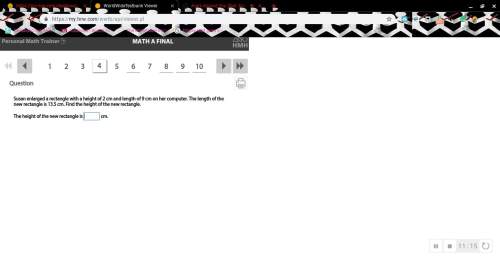∆ABC has vertices at A(11, 6), B(5, 6), and C(5, 17).
∆XYZ has vertices at X(-10, 5), Y(-12, -...

Mathematics, 22.05.2020 22:57 allisonklinger1786
∆ABC has vertices at A(11, 6), B(5, 6), and C(5, 17).
∆XYZ has vertices at X(-10, 5), Y(-12, -2), and Z(-4, 15).
∆MNO has vertices at M(-9, -4), N(-3, -4), and O(-3, -15).
∆JKL has vertices at J(17, -2), K(12, -2), and L(12, 7).
∆PQR has vertices at P(12, 3), Q(12, -2), and R(3, -2).
can be shown to be congruent by a sequence of reflections and translations. can be shown to be congruent by a single rotation.

Answers: 1


Other questions on the subject: Mathematics

Mathematics, 20.06.2019 18:04, kaylam8346
The $x$-intercepts of the parabola $y = x^2 + bx + c$ are $(-3,0)$ and $(5,0).$ find the equation of the parabola, and submit your answer in $y = ax^2 + bx + c$ form.
Answers: 1



Mathematics, 21.06.2019 17:00, ladnerhailey16
What is sin 7x/4 ? i need on this urgent trig
Answers: 1
You know the right answer?
Questions in other subjects:

Mathematics, 10.07.2019 14:00

Mathematics, 10.07.2019 14:00


Mathematics, 10.07.2019 14:00

English, 10.07.2019 14:00

English, 10.07.2019 14:00

Mathematics, 10.07.2019 14:00


Mathematics, 10.07.2019 14:00




